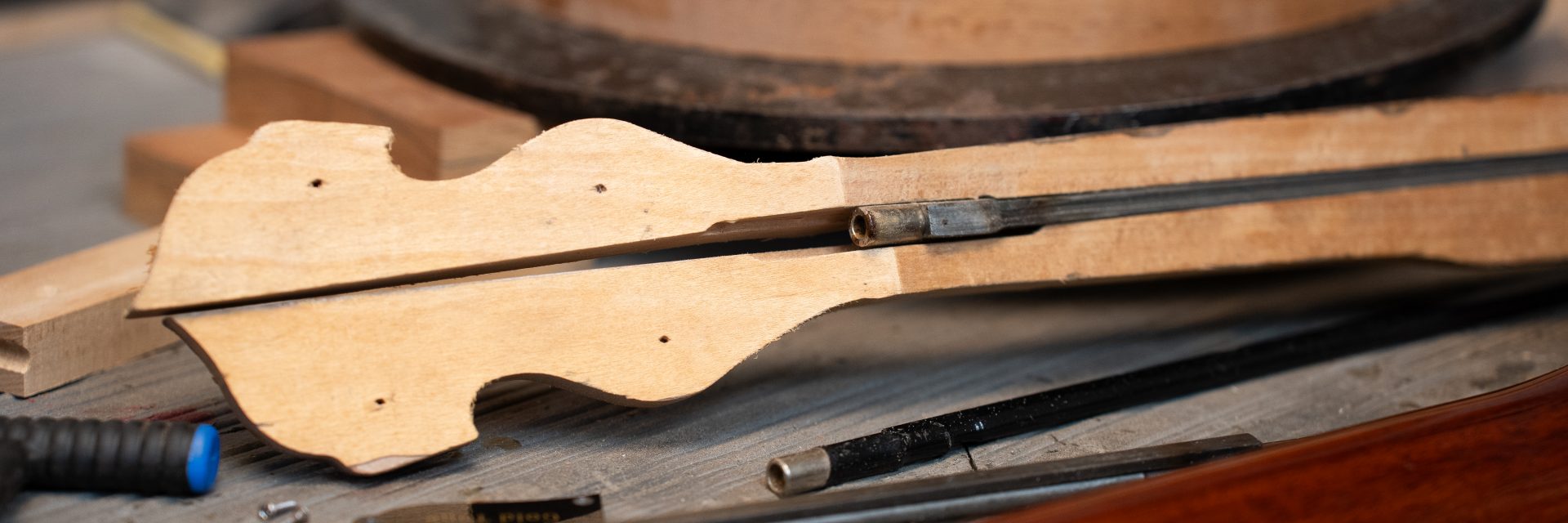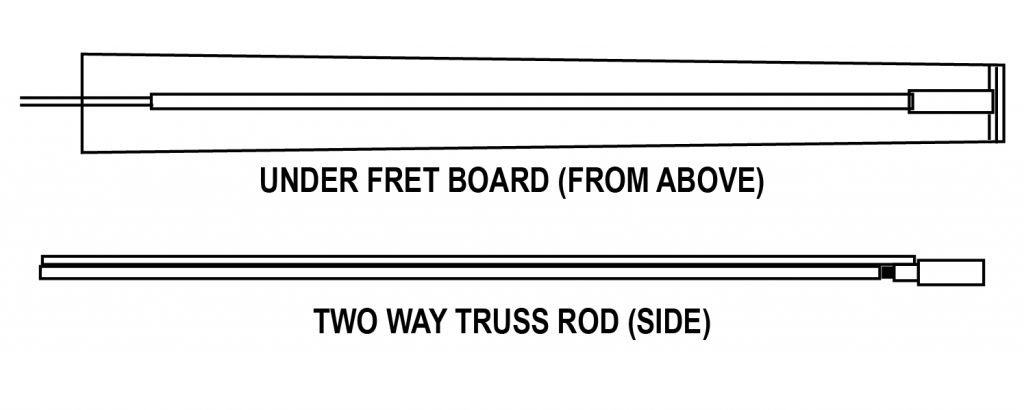0 - Not at all likely
5 - Very likely

A five-string banjo neck is unique in the fretted instrument family. Its long but slim structure is more prone to changes in shape due to fluctuating levels of ambient humidity. Thus, the adjustable truss rod.
All woods are porous organic substances, no matter which species we’re speaking of. ANY wood can warp or twist and cause the neck to take a shape that harms the playability of the banjo it’s installed on. We at Gold Tone believe that any banjo (at ANY price point) should feature a two-way adjustable truss rod to ensure optimal playability in changing environmental conditions.
Some makers may decide against the use of any sort of reinforcing neck rod in their lowest-priced banjos as a cost-saving measure. This is a false economy that denies the banjo buyer the ability to adjust for changes in neck relief that can result in string buzz or uncomfortable playing action.
Even our lowest-priced entry-level banjo (the very popular AC-1 and its siblings) features a two-way adjustable truss rod. This device enables the player to easily adjust the neck relief (the amount of upward or downward curve) to compensate for dry or humid conditions wherever the banjo is used. Add this feature to a banjo that’s affordably priced and you get both value AND dependable performance. Our adjustable truss rod is installed in a one-piece neck with a glued-on fretboard, too.
Simply put, an adjustable two-way truss rod enables the player to compensate for forward bow (when the center of the fretboard becomes more distant from the bottom of the strings) AND reverse bow (when the center of the fretboard has risen closer to the strings).

The adjustment process is easily learned and takes very little time. Anyone can do it; there’s no magic involved. Tune the banjo to standard G tuning; with your fretting hand, depress the third string at the first fret with the index finger; with the other hand, use the third or pinky finger to depress the third string at the last fret. Notice how the taut string now describes a perfectly straight line along its length? Now, spread out the fingers of the hand that’s holding down the string at the last fret and extend your thumb up the neck and use it to tap the taut string downward as close as possible to the center of the length of the fretboard. The proper amount of relief (or forward bow that’s necessary to prevent string buzz) will be shown as about 3/32” under the center of the string’s length. This enables a fretted string to vibrate freely without hitting the adjacent fret. Today’s two-way truss rods add forward bow when the adjusting nut is turned counterclockwise and upward bow when turned clockwise.
The truss rod is NOT meant to be the determinator of action height; any effect that the truss rod has on playing action is incidental to its actual function: the adjustment of “relief” (under-string clearance at the center of the neck’s span). Increasing the forward bow of the neck with the truss rod WILL raise the action, but that is not the rod’s function. Action adjustment is done most simply by installing a higher or lower bridge, leaving the angle of the neck to the pot undisturbed. Over-adjustment of the neck angle by adjustment of the “coordinator rod” can warp the rim.
Every instrument Gold Tone offers is designed with the “owner experience” in mind. We seek to provide the player with the most trouble-free instruments possible. Thus: “In Rod We Truss”.